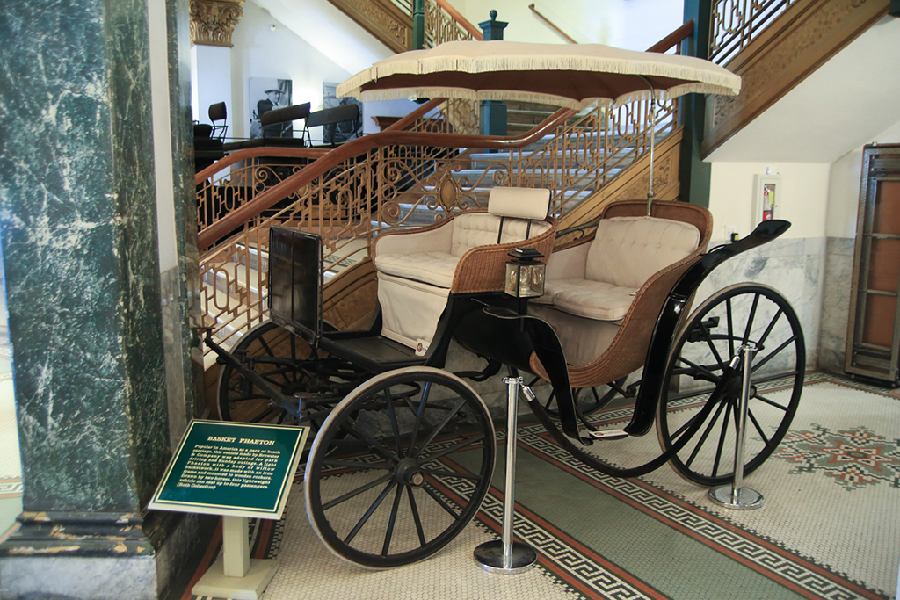Plans to build a carriage museum at Courthouse Square are barely out of the starting gate. Still, the dream is enough to awaken memories of a lavish carriage house that once stood on the Sequoia High campus, an imposing reminder of America’s Gilded Age, a time when the rich flaunted their wealth.
The two-story carriage house wasn’t much to look at in 1958 when it was designated a firetrap and torn down, but in its heyday it was truly an imposing landmark. The carriage house built by Moses Hopkins, the brother of railroad tycoon Mark Hopkins, was home to not only horses and carriages but also the grooms who took care of them. The stables were in the back while the custom-built carriages were in the front. “Sequoia graduates prior to 1958 have fond memories of that grand structure which looked like anything but a barn,” a term many students used to describe the building when it started showing its age, Redwood City Tribune columnist Otto Tallent wrote in 1978, exactly a century after the carriage house made its debut.
When Moses Hopkins died, the property was sold to William Dingee, the so-called “cement king.” Under the Dingee regime, a specialist was imported from Italy to paint over plaster walls to make them resemble finely grained wood. The interior featured full-length mirrors, marble sinks and a fireplace. Dingee made sure the redecorated carriage house garnered headlines. A great social event was made of the 1905 public reopening of the fashionable showplace. The equivalent of $71,000 of today’s dollars was spent on the bar and decorations alone. One report said Dingee owned about 200 horses, including race horses. There was a race track located west of Elwood Street, territory that was also used as a pasture. Dingee’s wife seemed more interested in hosting parties than in horse racing. She gave dances in the stables where the floor was so highly polished people could see their faces reflected. Mrs. Dingee insisted the horses wear rubber boots when walking on the floors.
A year after the big party, the great earthquake of 1906 devastated the Dingee estate. The carriage house was the lone building remaining from the original Hopkins days. The land that now makes up the high school campus was bought by school officials in 1920 for $80,000. By that time the property had passed into the hands of noted San Francisco architect Albert Pissis. Redwood City quickly passed a school bond to gain ownership of the land and build the high school. At one time, the carriage house was used as the mechanical arts building and later a maintenance headquarters filled with discarded equipment. Concrete entry paths, planting beds and decorative benches located in front of the school’s main building remain as reminders of the Dingee years.
When the carriage house was demolished in 1958, the high school newspaper, then called the Sequoia Times, ran a special edition with the headline: “Historic Barn Falls After 80 Years.” The reporter labeled the carriage house “the last link” to Redwood City’s lumbering days: “The historical and picturesque carriage house on the Sequoia campus met its fate in the form of iron-teeth clamps and crowbars of a wrecking company.”
What goes around comes around, however. Redwood City’s future envisions a carriage museum that will house 33 horse-drawn carriages, most of them in storage for decades. If all goes well, the carriages would be displayed in a three-story, 40,000 -square-foot structure to be part of the San Mateo County History Museum.
“This is our thinking and there’s miles to go,” said Museum President Mitch Postel. Postel said the display will include nine Brewster carriages, a brand considered among the finest in the world. Unfortunately, Postel told Climate, none of the museum’s vast collection includes carriages that belonged to Hopkins or Dingee.
This story was originally published in the October print edition of Climate Magazine.






